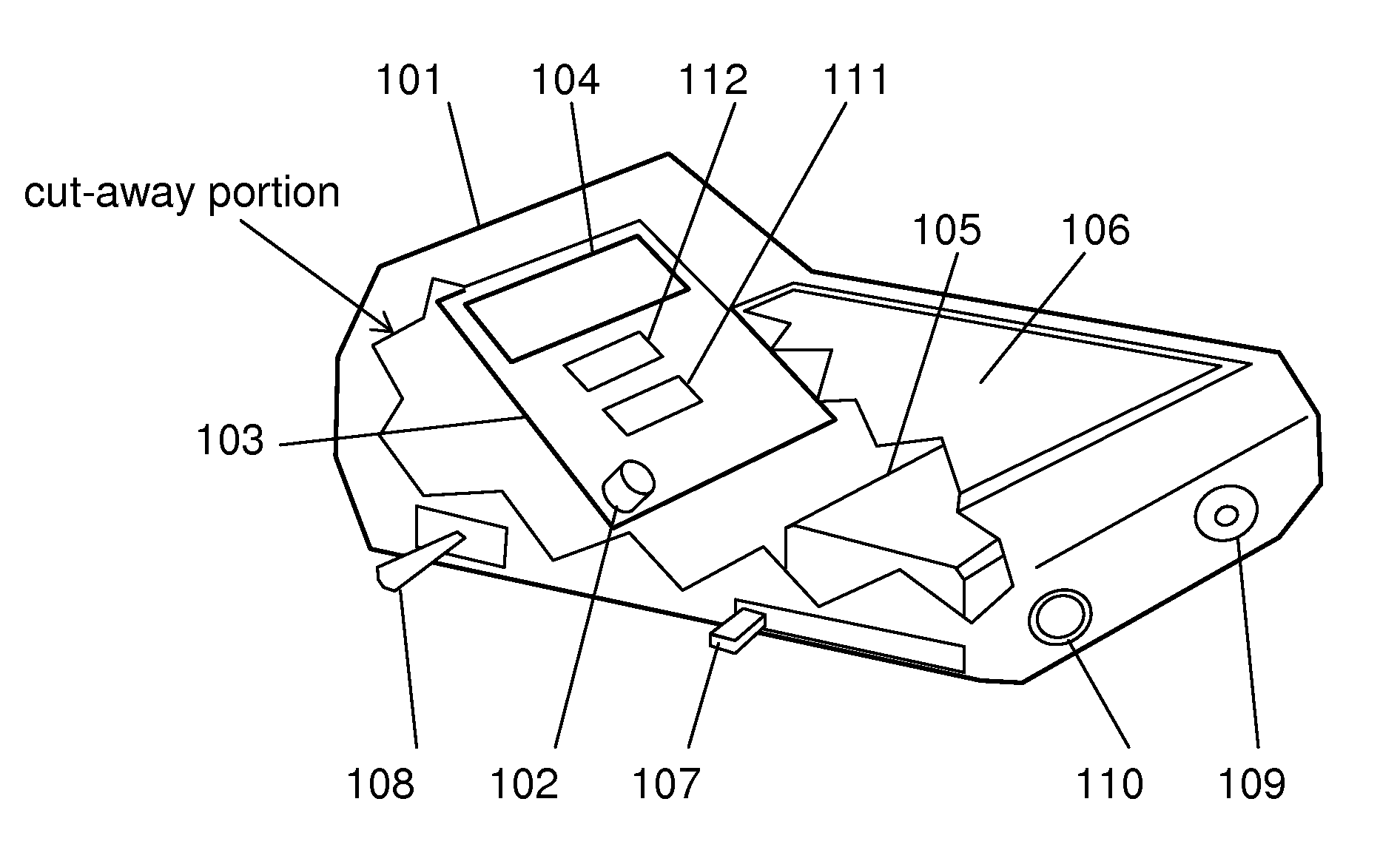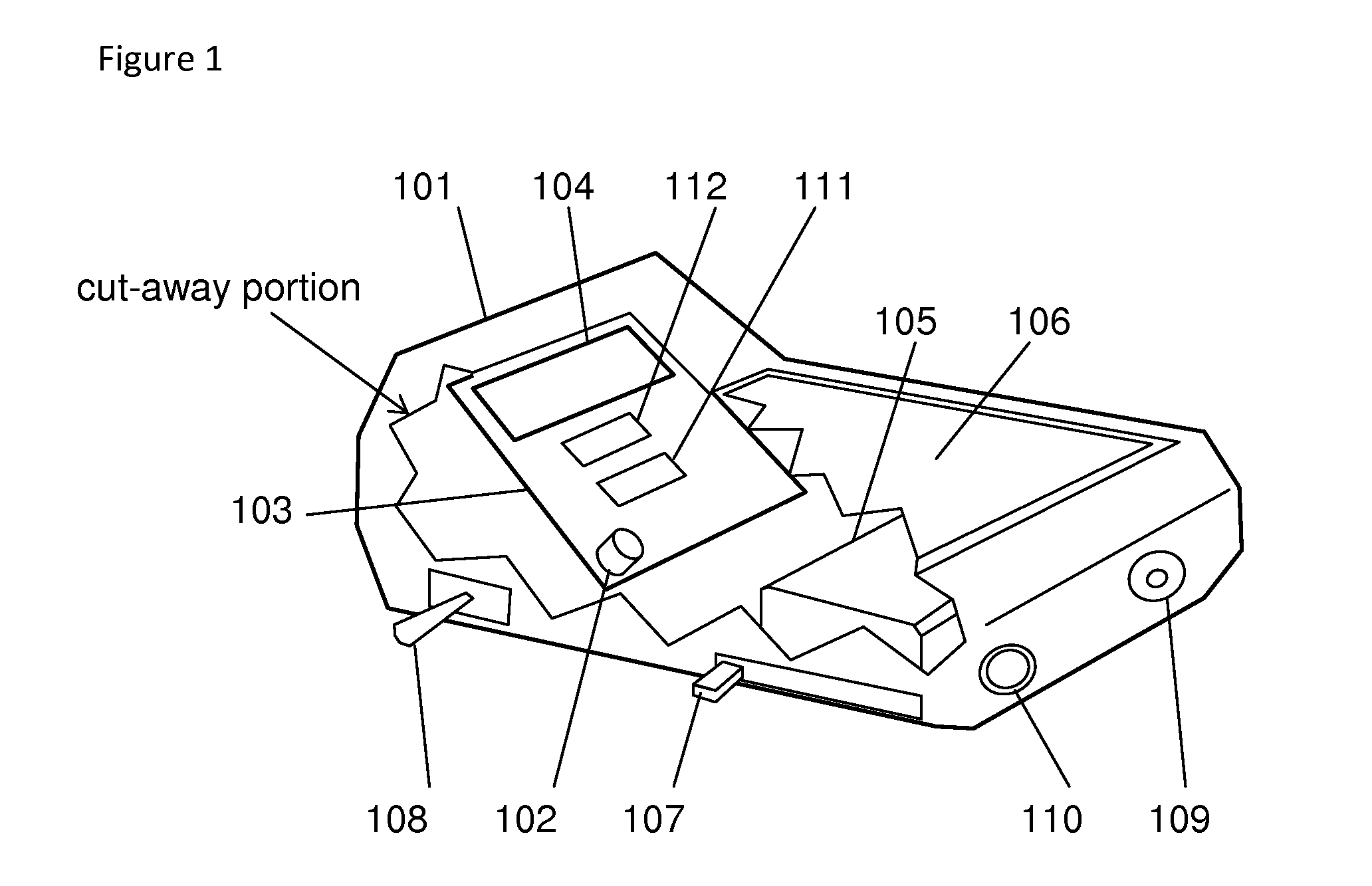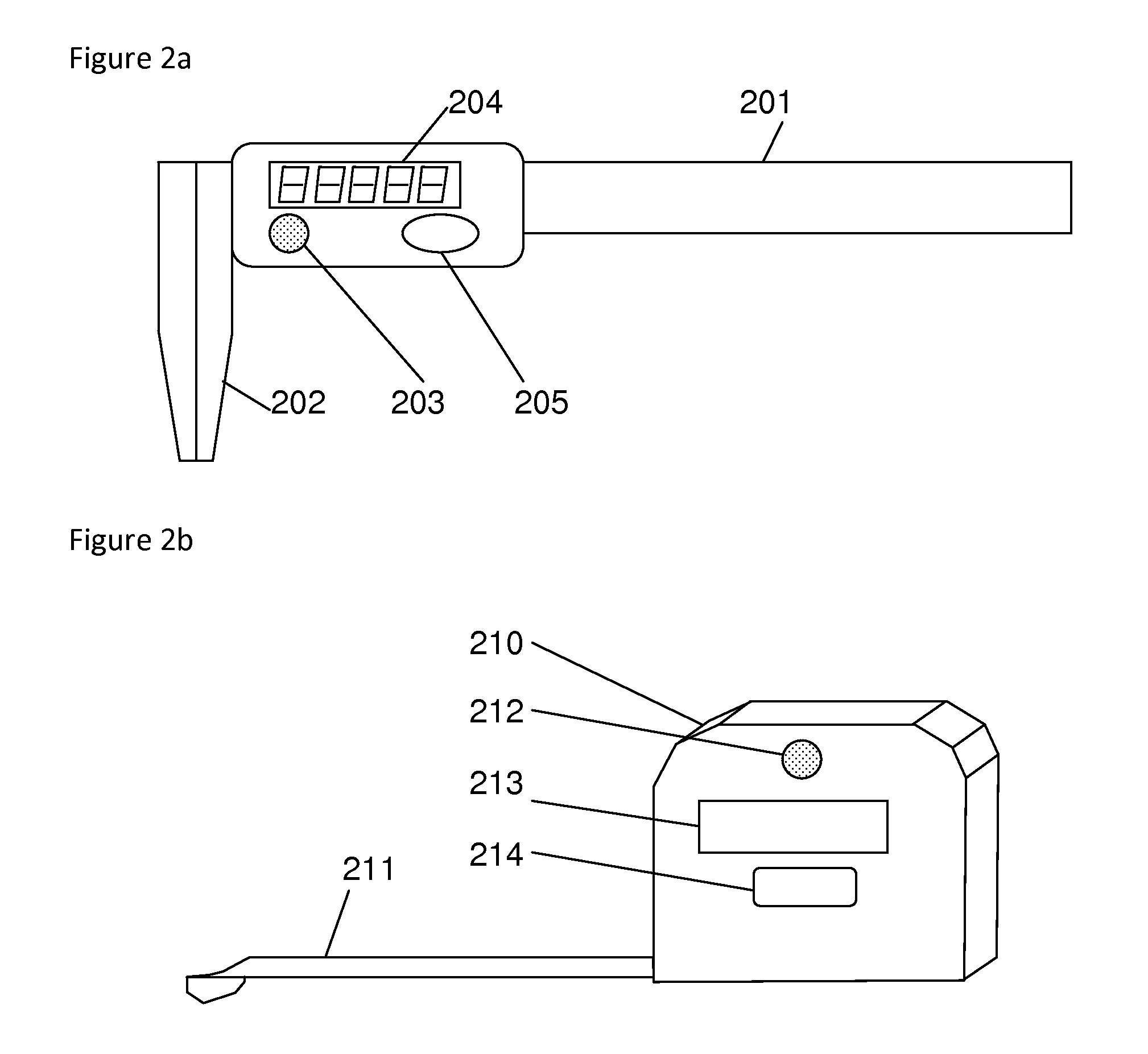[0020]In one aspect, the invention measures a size or length or distance when triggered by a type 1 command. Examples of voice-triggered distance measuring devices include micrometers and calipers and tape measures with electronic readouts. Typically a user measures the size of an item by holding the measurement device against the item and reading a result. Often it is difficult to read while holding the device in place, due to low light level or an awkward position for instance. But if the user removes the device from the item for easier reading, often the value is disturbed due to the additional motion, and gives a wrong reading. The invention solves this problem by freezing the measurement at a precise moment of the user's choice. The user can then remove the device and read the measured value at leisure, without disturbing the information. Also, it is easy for the user to abort a measurement and start over, simply by speaking a type 2 command to force a reset, and then another type 1 command when ready to measure.
[0023]The invention includes a specific protocol to deal with additional commands occurring after a measurement has been triggered. The invention may respond to further type 1 commands by adding to the measured value. A tally counter, for example, continues accumulating the total count upon each type 1 command. Or, the invention may respond to subsequent type 1 commands by replacing the earlier result with the later result, thereby updating the measured value upon each type 1 command. A voice-activated voltmeter would be of that type. Or, the invention may freeze the first measured value, ignoring further type 1 commands until being reset by a type 2 command (or by a button press). A voice-triggered caliper may use that feature, thereby enabling easier readout.
[0025]The invention includes means (such as a switch) for turning the device on and off. The invention includes means (such as another switch) for suspending and resuming measurement operations. The invention includes means (yet another switch) for resetting the measured value to zero manually. Alternatively, and preferably, the invention includes a single multifunction switch that combines all the operations of an on-off switch, a run-hold switch, and a manual-reset switch. The multifunction switch is a momentary-type pushbutton switch that, when pressed, causes the instrument to respond differently depending on the state of the instrument and the duration of the press. For example, when the instrument is off, a press of the multifunction switch turns on the power. When the power is on, a brief press of the multifunction switch causes the instrument to toggle between running and holding modes. A longer press triggers a manual reset. An even longer press turns the power off. Such a multifunction switch is convenient and appealing to users.
[0026]The invention includes both manual and automatic means for adjusting the acoustical sensitivity. The sensitivity adjustment could be increased to accommodate a user who speaks softly, or decreased to negate a noisy environment. Examples of manual sensitivity adjusting means include a continuously-variable potentiometer and a multi-position click-stop slide switch, wired to attenuate the microphone signal or to modulate the amplifier resistors or to vary a DC level which a microcontroller then interprets as a threshold adjustment. The automatic adjusting means responds to changing background noise levels by monitoring the background noise and adjusting a signal analysis parameter to accommodate the observed level of noise. Preferably the instrument prevents the sound of a command from unduly influencing the adjustment, for example by suspending or retarding the automatic adjustment whenever a voice command is detected. Preferably, the threshold value is not reduced below a predetermined minimum value, even in complete silence.
[0036]Structurally, the inventive system typically comprises a circuit board in a case. The inventive sound receiver includes a microphone, amplifiers, filters, and rectifiers on the circuit board. The microphone preferably has sufficient sensitivity (at least −30 dB) and the amplifier has sufficient gain (typically 40 to 100 dB) to permit signal analysis. The signal analyzer includes analog or digital electronic means for comparing the signals to threshold values and for measuring time intervals to discriminate type 1 and 2 commands. The sound receiver and signal processor may comprise a single board or separate circuit boards. Separate boards are more expensive but provide improved isolation of the amplifier. While the signal processing can be done with voltage comparators and monostable timers, a much tidier solution is a digital processor such as a microprocessor or microcontroller or gate array.
[0048]The invention provides numerous valuable advantages. It allows a user to perform tedious and distracting measurements easily and hands-free, such as counting and resetting the count. It enables fast time interval measurements, and arguably provides greater precision than any manually controlled measurement. It allows the user to measure a size or distance at a moment of choice, and then read the result later without worrying about the measurement changing. It allows a worker to hold multiple probes on a test circuit while triggering a measurement hands-free. It helps control a weighing process by allowing the user to manage the load rather than focusing on the readout. It greatly simplifies position-dependent measurements such as temperature and light level and field measurements, by allowing the user to register the measurement value at will. Most importantly, it provides all these capabilities using a quick and simple command recognition protocol, which is easily performed by all users without training, and is implemented with extremely low-cost components.
 Login to View More
Login to View More  Login to View More
Login to View More 


